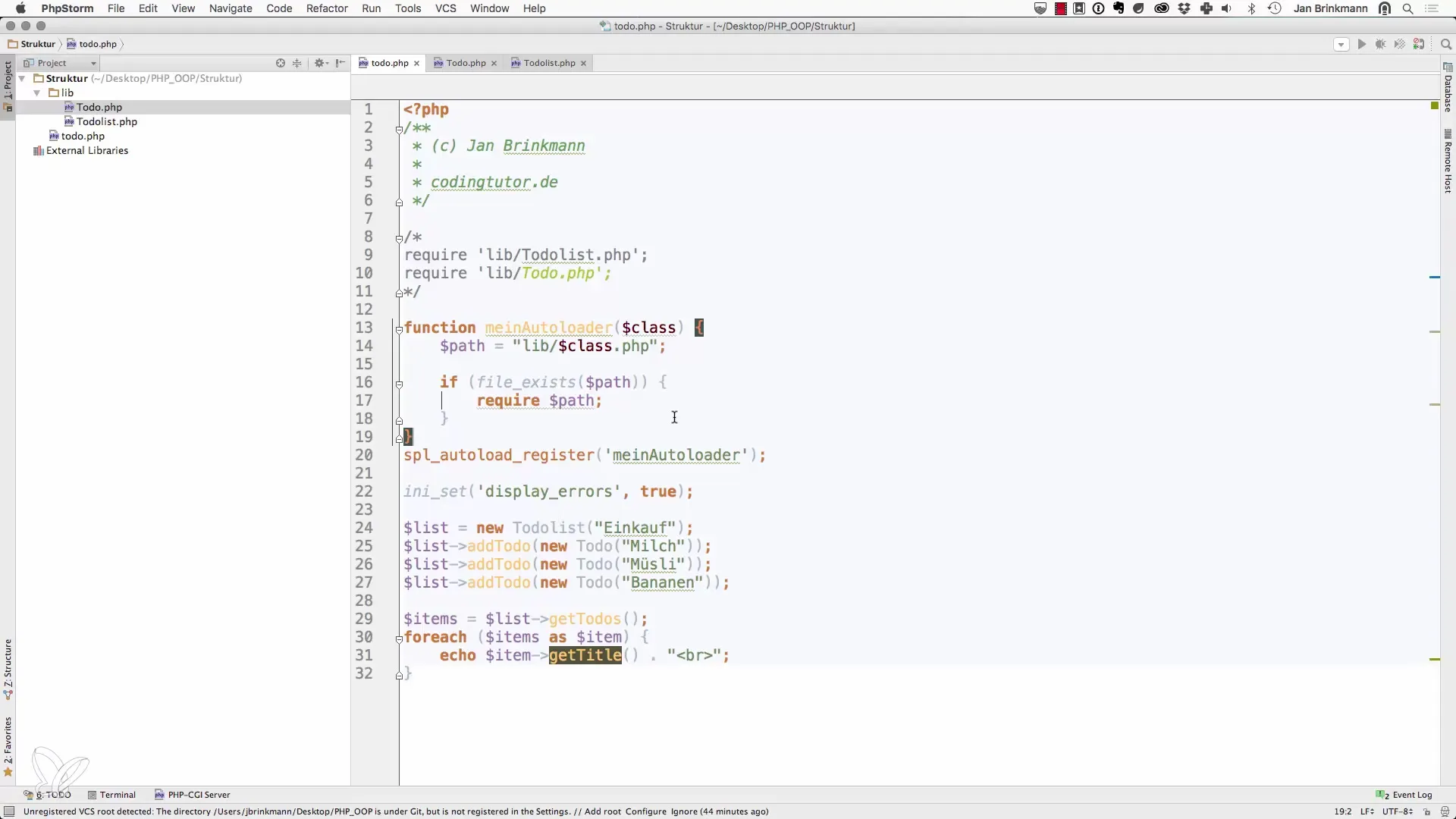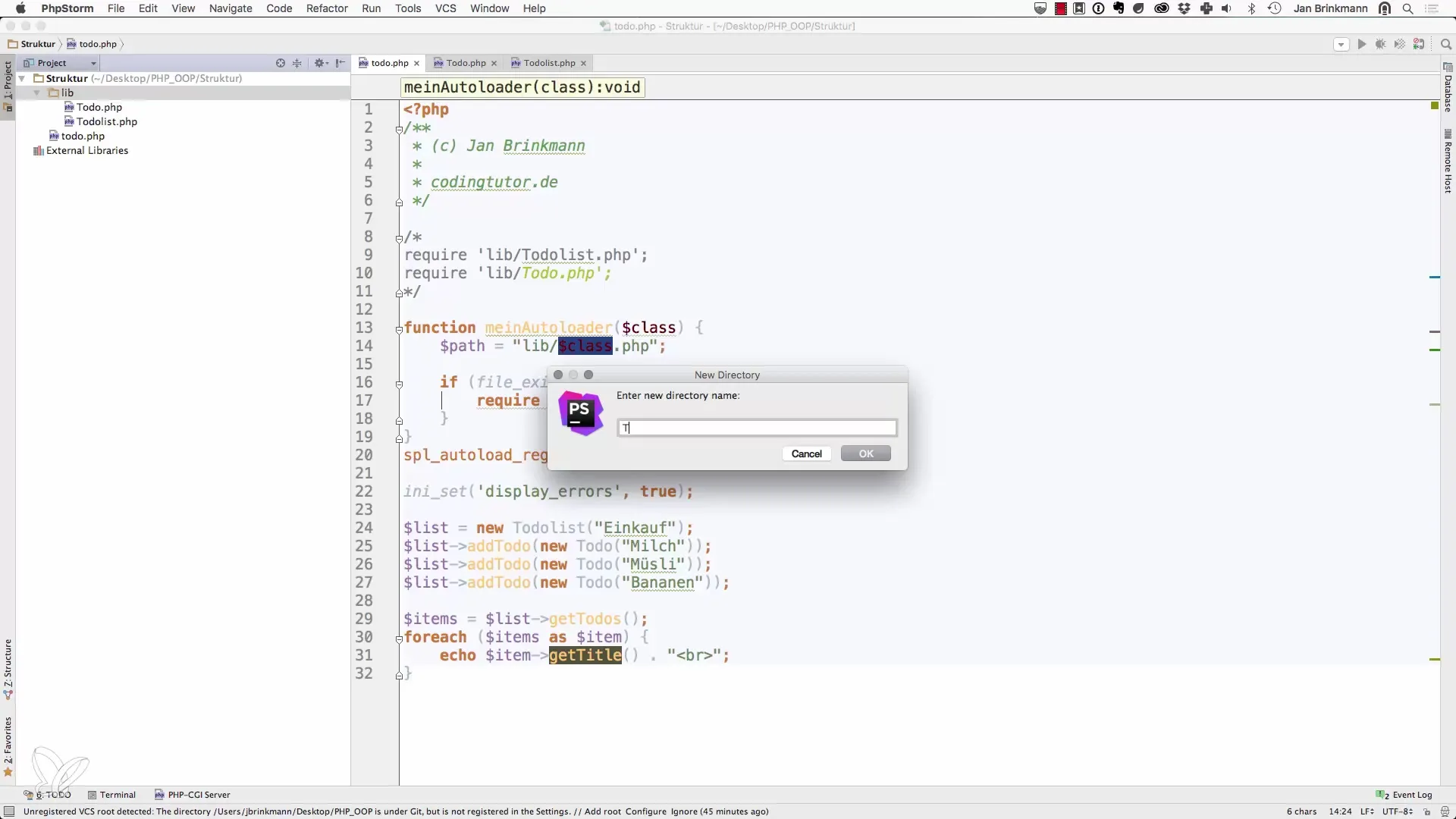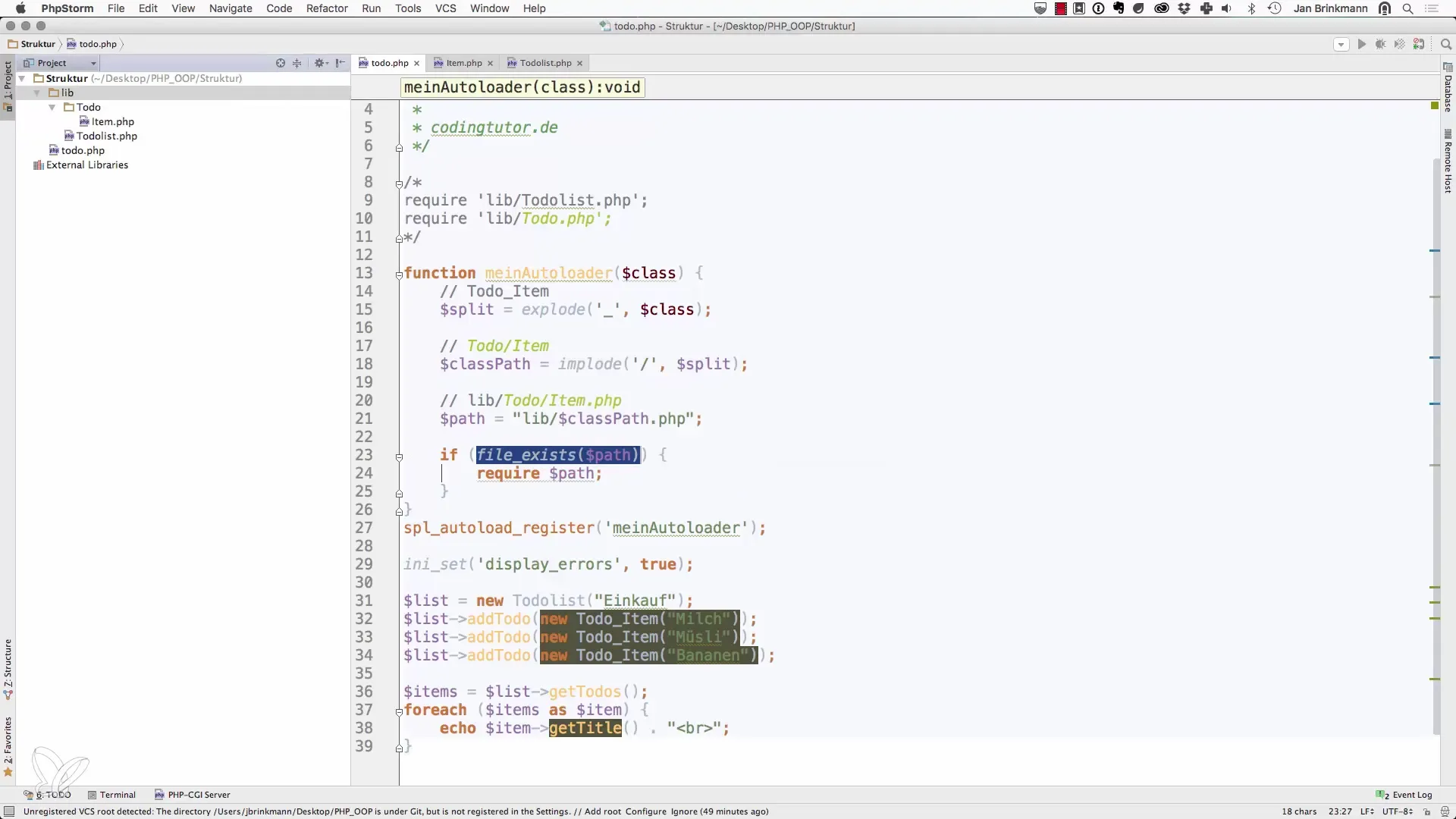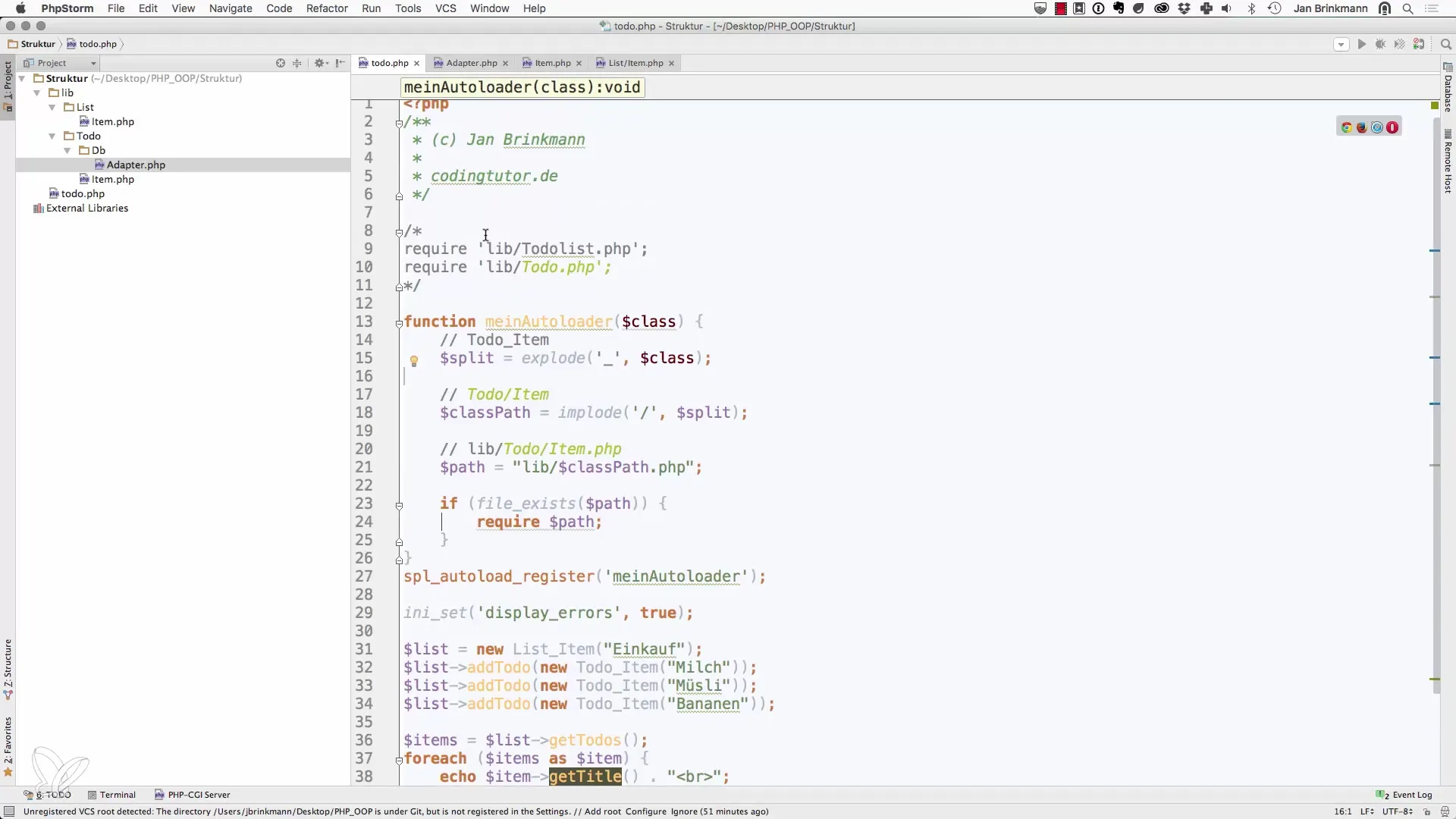In line with the principles of object-oriented programming, you are now looking for clear structures. The organization of your class and its files plays a crucial role in making your PHP projects clear and maintainable. Below, you will learn how to set up an effective project structure that significantly simplifies working with classes and their instances.
Key Insights
- A clean directory structure increases clarity.
- The autoloader needs to be adjusted to various directory types.
- The use of namespaces improves the readability and maintainability of your code.
Step-by-Step Guide
To achieve better structure in your project, we will go through the necessary steps.
Step 1: Adjusting the Directory Structure
First, we need to rethink the structure of our project directory. The current classes are stored in a single directory, which can lead to problems with further increases in classes and dependencies. You should create a new directory for your "todo" files to better organize them.

Step 2: Renaming the Classes
To avoid redundancy and confusion, it is advisable to name your classes in a way that better reflects their content. Instead of "to do item," use the term "item" for your class. This ensures more clarity and reduces the risk of misunderstandings in the future.

Step 3: Adjusting the Autoloader
The autoloader now needs to be reprogrammed to work with the new folder structure. Make sure that it also recognizes the new subdirectories where your classes are located. This means that you have to generate the path to the class dynamically, based on the class name.
Step 4: Implementing Class Concepts
Create new classes that specifically handle certain aspects of your "todo" items, such as "ListItem" for lists or "DatabaseAdapter" for database operations. This promotes the principle of single responsibility and helps you keep your code modular.

Step 5: Using Explode and Implode
To maximize the benefit of autoloading, you can utilize the PHP functions explode and implode. The class name is broken down to generate the path to the file. This way, you can easily and dynamically create the specific path to the class.

Step 6: Using Namespaces
To further improve clarity, you should use namespaces. These allow you to organize your classes into logical groups and avoid conflicts between classes with the same name. This makes the name of your class more specific, which enhances the readability of the code.

Setting namespaces also prevents you from having to choose long class names that are hard to read and maintain. Instead, you can work with short, precise identifiers.
Summary – Order in Object-Oriented Programming with PHP
A clean structure in your PHP project is essential to ensure clarity and effectiveness. Adjusting the directories, properly naming the classes, optimizing the autoloader, and using namespaces are crucial steps to achieve this order.
Frequently Asked Questions
What is the purpose of an autoloader?An autoloader automatically loads classes without you having to manually include them with require or include.
Why are namespaces important?Namespaces prevent naming conflicts and promote the structure and readability of the code.
How can I group my classes?You can arrange classes in logical subdirectories that are marked by thematic references.
Do I need to have each class in its own file?Yes, it is common practice to store each class in a separate file to promote maintainability and clarity.
How do I use explode and implode in PHP?explode breaks a string into an array, while implode converts an array back into a string.


